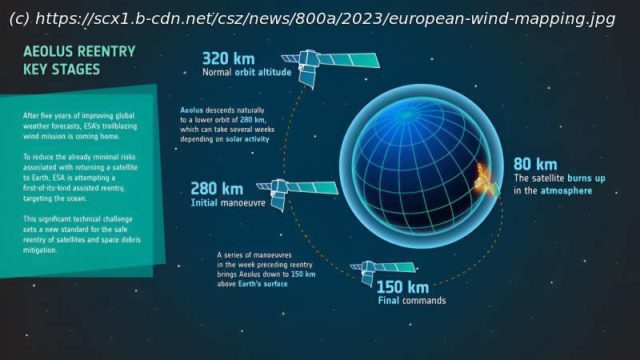A European wind-mapping satellite has returned successfully to Earth following a delicate assisted return designed to minimize damage from flying debris, the European Space Agency said on Saturday.
A European wind-mapping satellite has returned successfully to Earth following a delicate assisted return designed to minimize damage from flying debris, the European Space Agency said on Saturday.
It is the first time ESA’s mission control had attempted an assisted re-entry through the planet’s atmosphere.
The Aeolus satellite—named after the guardian of wind in Greek mythology—was launched in 2018 to measure Earth’s global wind patterns, and thus improve both short-term weather forecasting and our understanding of man-made climate change.
“Surpassing scientific expectations and exceeding its planned life in orbit, the Aeolus wind mission has been hailed as one of ESA’s most successful Earth observation missions,” the agency said on its website.
“And now, its end will go down in history too, thanks to the ingenuity of the agency’s mission control team, who guided this remarkable satellite down to Earth’s atmosphere for a safe reentry.






